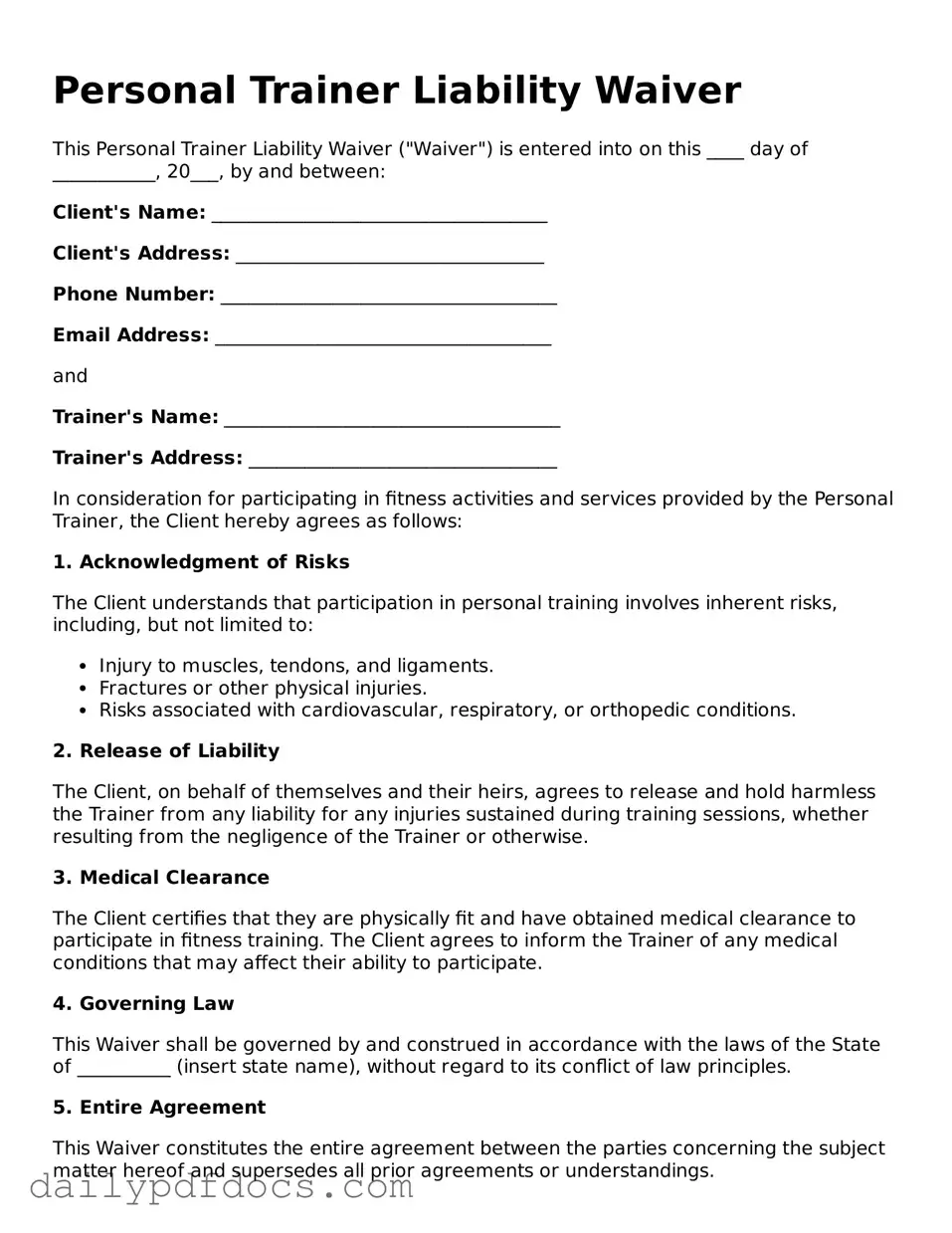Personal Trainer Liability Waiver
This Personal Trainer Liability Waiver ("Waiver") is entered into on this ____ day of ___________, 20___, by and between:
Client's Name: ____________________________________
Client's Address: _________________________________
Phone Number: ____________________________________
Email Address: ____________________________________
and
Trainer's Name: ____________________________________
Trainer's Address: _________________________________
In consideration for participating in fitness activities and services provided by the Personal Trainer, the Client hereby agrees as follows:
1. Acknowledgment of Risks
The Client understands that participation in personal training involves inherent risks, including, but not limited to:
- Injury to muscles, tendons, and ligaments.
- Fractures or other physical injuries.
- Risks associated with cardiovascular, respiratory, or orthopedic conditions.
2. Release of Liability
The Client, on behalf of themselves and their heirs, agrees to release and hold harmless the Trainer from any liability for any injuries sustained during training sessions, whether resulting from the negligence of the Trainer or otherwise.
3. Medical Clearance
The Client certifies that they are physically fit and have obtained medical clearance to participate in fitness training. The Client agrees to inform the Trainer of any medical conditions that may affect their ability to participate.
4. Governing Law
This Waiver shall be governed by and construed in accordance with the laws of the State of __________ (insert state name), without regard to its conflict of law principles.
5. Entire Agreement
This Waiver constitutes the entire agreement between the parties concerning the subject matter hereof and supersedes all prior agreements or understandings.
By signing below, the Client acknowledges that they have read and understood this Waiver. The Client agrees to assume all risks associated with their participation in personal training and hereby releases the Trainer from all liability.
Client Signature: _________________________________
Date: __________________________________________
Trainer Signature: _______________________________
Date: __________________________________________
